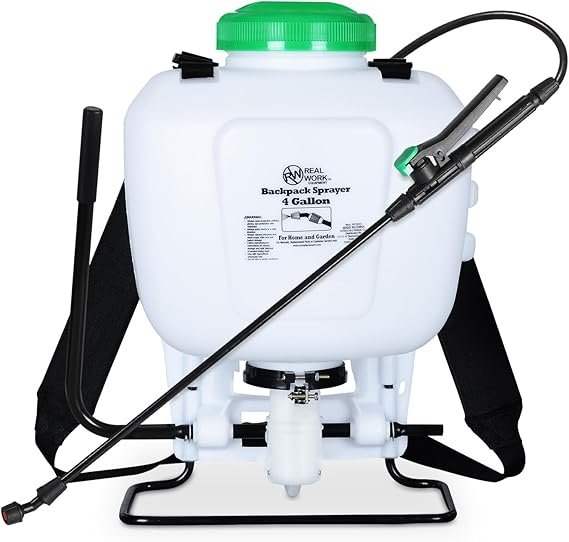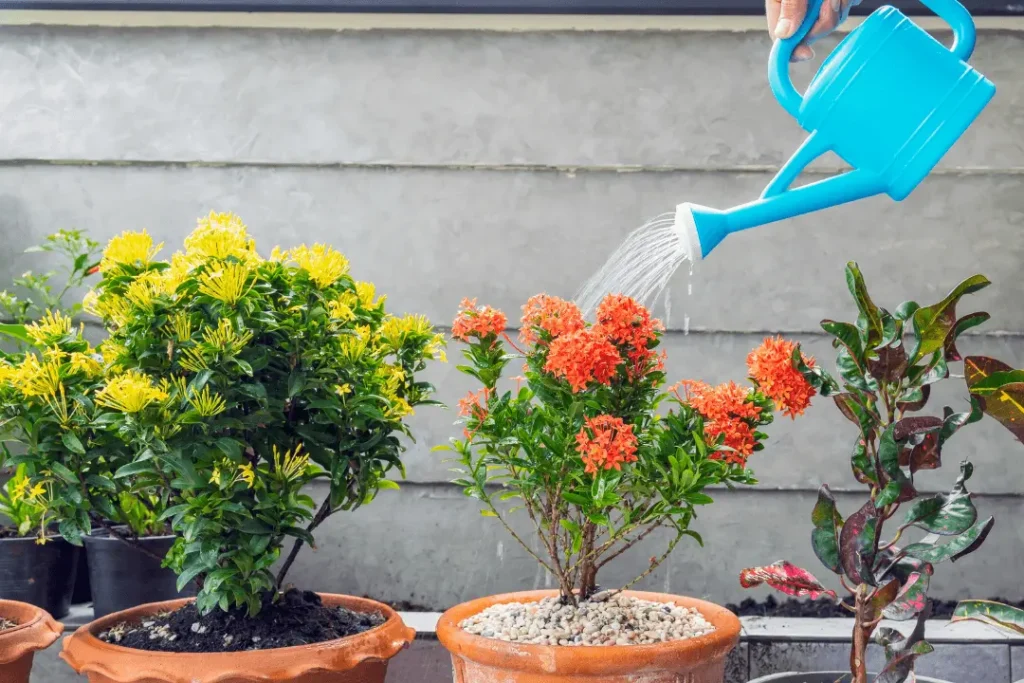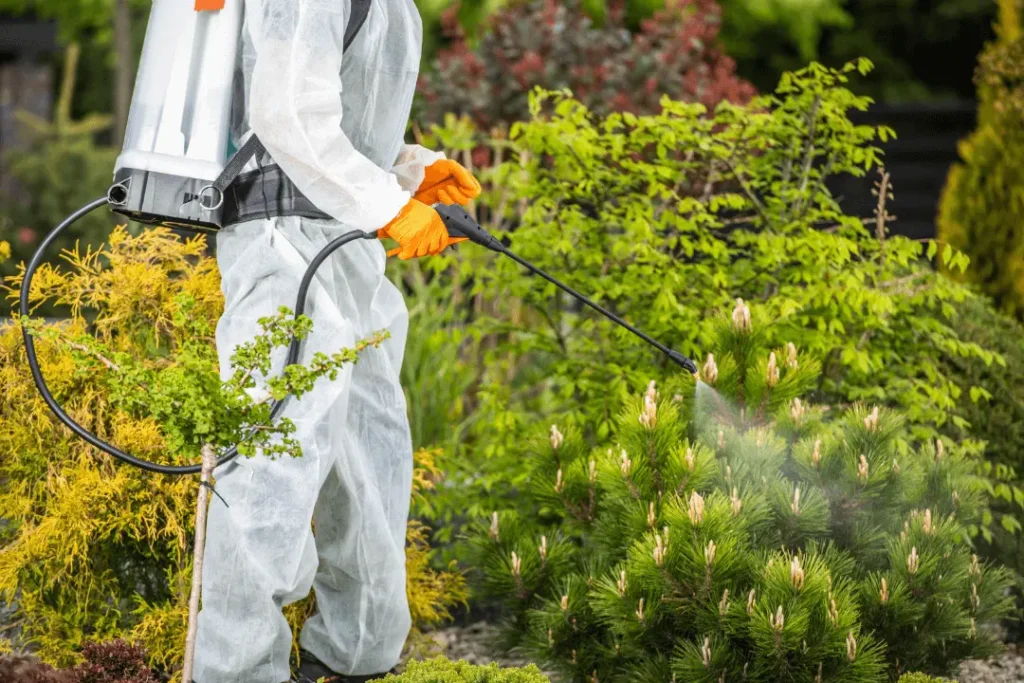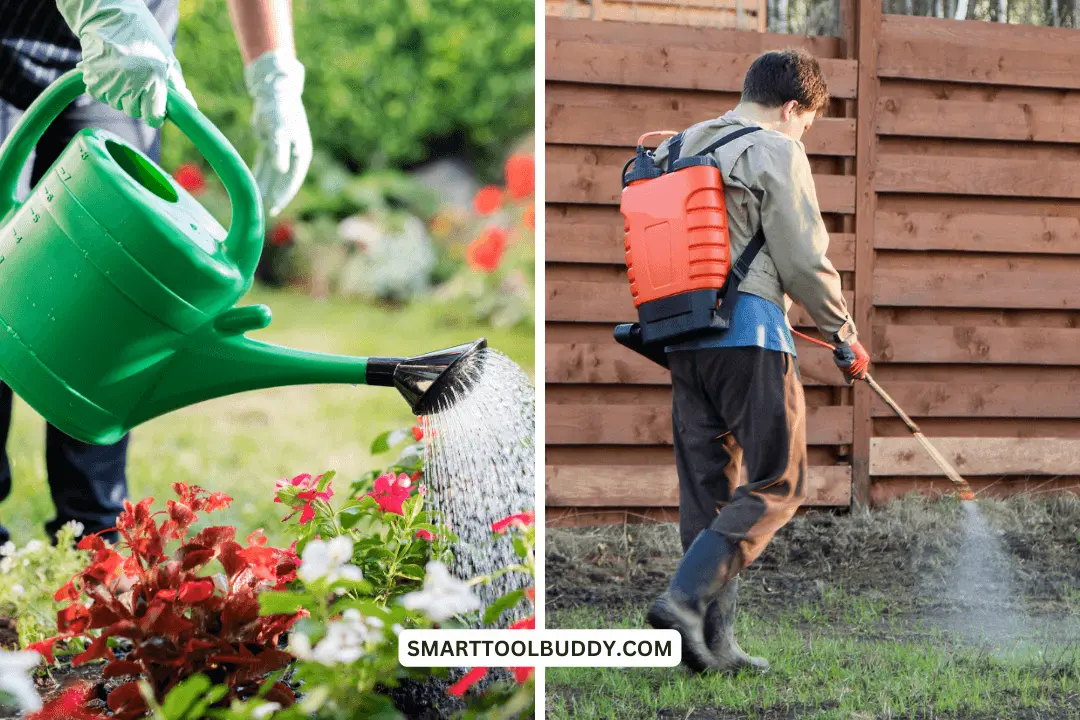Difference Between Watering Can and Knapsack Sprayer
Agriculture and gardening require two key tools that stand out for their utility and versatility: the watering can and Knapsack Sprayer. Both serve the care of plants equally, but each have distinct functions and advantages; this article will explore their features to help determine which is the most suitable one for your personal requirements.
Watering Can and Knapsack Sprayer
Watering Can
A watering pot, also called a “watering can”, is an easily portable container equipped with handles and spouts designed to deliver hand watering directly into plants by hand. As one of the oldest and traditional gardening tools, its purpose has remained unchanged over time.
Best knapsack Sprayer

Design and Structure for Watering Cans

Watering can mostly used for indoor gardening plants. Watering Cans feature some common characteristics. These features may include:
Watering Can Design
Watering cans typically feature:
- Materials: used are typically metal, plastic or ceramic.
- Capacity: typically range from one liter up to 10 Liters
- Spout: Spout for precise watering needs can include long thin spouts with narrow mouth openings
- Rose: for more accurate water distribution; Rose Nozzle with detachable small holes allows water to spread more evenly.
Watering Cans can Typically be Found used to
Watering Can Uses
- Specific Watering: is designed for small gardens, potted plants and seedlings that need regular attention.
- Flexibility: With its flexible use both indoors and outdoors Specific Watering makes an excellent solution
- Fertilizer Application Apply water-soluble fertilizers directly on soil. In this instance a Knapsack Sprayer would come in handy.
Watering Can Ease of Use
- Simplicity: Simple It is designed for easy filling, transporting and pouring with minimal effort required
- Control: Precise control over water quantity and flow rate.
- Maintenance Easy maintenance and cleaning
Read More Posts Click: https://smarttoolbuddy.com
Knapsack Sprayers come equipped with this feature as well

Knapsack Sprayer
A Knapsack Sprayer is an apparatus used for applying liquids such as water and fertilizers to plants, herbicides, and pesticides. This device features a tank which is carried behind your vehicle with its contents containing a pump mechanism, hose assembly, and sprayer attachment. The knapsack sprayer is the best option for large gardening or field areas.
Sprayers designed specifically for Knapsacks are more complex, including:
- Tank: Tanks made from durable materials like plastic or stainless steel typically hold 10-20 liters..
- Pump: A pump powered either by battery or manually can pressurize liquid.
- Hose and Nozzle: Nozzle and Hose Sets come equipped with various types of nozzles that create different spray patterns for spraying applications.
- Harness: Straps provide easy wearability of tanks on the back. Watering Can Uses
Knapsack Sprayers can be Utilized for Many Different Applications, Including:
- Large Area Coverage: It is well suited for large orchards, gardens and fields in agriculture.
- Chemical Application: Perfect for pesticide and herbicide application as well as fertilizer foliar use.
- Versatility: Nozzles may be switched out as required while pressure settings can also be adjusted accordingly to fit different jobs
Knapsack Sprayer Ease of Use
- Operation: Operating manual pumps requires some instruction for optimal use
- Portability: The wearer may feel heavy at times; however, it has been designed to allow comfortable wearing over long periods.
- Maintenance: increases with more components, from cleaning nozzles and inspecting seals, to replacing them altogether.
Advantages and Disadvantages Between Watering Can and Knapsack Sprayer
Watering Can Advantages
- Precision: Excellent for targeted watering.
- Affordability: Generally cheaper than sprayers.
- Durability: Simple design with fewer parts to break.
Watering Can Disadvantages
- Capacity: Limited to smaller volumes, requiring frequent refills.
- Labor-Intensive: Not ideal for large-scale watering.
Knapsack Sprayer Advantages
- Efficiency: Covers large areas quickly.
- Versatility: Suitable for various applications beyond just watering.
- Adjustability: Different settings for different needs.
Knapsack Sprayer Disadvantages
- Complexity: More complicated to use and maintain.
- Cost: Generally, more expensive than watering cans.
- Weight: Can be cumbersome when fully loaded.
Choosing the Right Tool for Your Needs
When Should a Watering Can Be Used
- Small Gardens and Pots: Ideal for Home Gardening, Plants in Pots and areas requiring delicate watering.
- Indoor Use: Indoor use is great for greenhouses and indoor plants.
- Spot Treatment: spot treatments allow users to target specific plants without excessive spraying
When to Use a Knapsack Sprayer
- Large Gardens and Fields: Long Gardens and Fields Are the perfect solution for large areas requiring uniform coverage
- Chemical Applications: Essential for applying pesticides and herbicides uniformly.
- Efficiency Needs: When time and labor efficiency are crucial.
Conclusion
Knapsacks, watering cans, and knapsack sprayers are essential tools in agriculture and gardening; each has a special function. Knowing their functions will enable you to choose the most effective equipment for your needs while maintaining efficient plant care practices.
Frequently Asked Questions (FAQ) Compression of Watering Can and Knapsack Sprayer.
Q1: What is a knapsack sprayer used for?
knapsack sprayer is a versatile tool used for applying liquids such as pesticides, herbicides, fertilizers, and disinfectants. It is commonly utilized in agriculture, horticulture, and gardening for tasks such as:
Pest control: Spraying insecticides to protect crops and plants from pests.
Weed control: Applying herbicides to eliminate unwanted vegetation.
Fertilizing: Distributing liquid fertilizers evenly over crops and plants.
Disinfection: Sanitizing surfaces in greenhouses, barns, and other facilities.
The knapsack sprayer is designed to be worn on the back, allowing the user to move freely and cover large areas efficiently.
Q2: What is the difference between a knapsack sprayer and a compression sprayer?
Knapsack sprayers and compression sprayers are both used for applying liquids, but they differ in design and application:
Knapsack Sprayer:
Design: Worn on the back like a backpack, with a hand-operated pump lever for pressurizing the tank.
Capacity: Typically holds larger volumes (up to 20 liters or more).
Use: Suitable for large areas and extended use, providing continuous spraying as the user pumps the lever.
Compression Sprayer:
Design: Handheld device with a pump mechanism that pressurizes the tank before spraying.
Capacity: Generally holds smaller volumes (usually 1 to 5 liters).
Use: Ideal for smaller tasks, such as spot treatments or home garden use. The tank needs to be repressurized periodically during use.
Q3: What are the disadvantages of a knapsack sprayer?
While knapsack sprayers are highly effective and versatile, they do have some disadvantages:
Weight: When filled, they can be heavy and cumbersome, potentially causing strain or fatigue during extended use.
Manual Pumping: Requires continuous manual pumping to maintain pressure, which can be tiring over time.
Maintenance: Regular cleaning and maintenance are necessary to prevent clogging and ensure proper functioning.
Cost: Generally more expensive than smaller handheld or compression sprayers.
Complexity: More parts and components can mean more potential points of failure and a steeper learning curve for proper use and maintenance.
Also Read:


Related Blogs
Affordable Bluetooth Projector for Gaming: The Best in 2024
The Best Soundbar for Music and Movies for Home Threaters
Stay Powered Up: The Best Portable Charger for iPhone 15 in 2024
The iPhone 15 Pro Max New Features: Comprehensive Features
Liquid Screen Protector vs Tempered Glass: Which is better in 2024
What is a Monkey Wrench: Complete Details
Guide to Cleaning Your Gatorade Bottle The Proper Way
How To Sharpen Garden Hoe: Real Guide to the problem
How to Use a Tack Hammer Nail it Every Time
Easy Ways on How to Clean Garden Tools at Home
Changing a Garden Cart Tire: Expert Hacks That Will Save You from $200+ in Repairs
How to Whisk Eggs: Easy Manual Techniques
Garden Fork Vs Pitchfork: Deciding Which Tool Will Meet Your Garden Needs
Conquering the Greens: How to Rake Artificial Grass
How Deep To Plant Daffodil Bulbs? A Simple Guide
How to Pick the Best Shovel for Digging in 2024
The best time to power rake your lawn
Why Your Kitchen Isn’t Complete Without an Acacia Cutting Board
How to Replace Trimmer Line in Bump Feed: Step-by-Step Guide
Perfect Make Matcha Without Whisk: The Ultimate Guide
10 Ways to Remove Snow from Driveway Without a Shovel: Innovative Snow Removal
The Ultimate Guide: How Many Wheelbarrows of Sand Per Bag of Cement
Don’t Make This Silly Mistake with Your 5 Uses of Garden Fork
Is a Spade and a Shovel the Same? Discover the Differences Here
Transform Your Garden with Stunning Garden Stake Ideas You’ll Love
The Best Home Gym Equipment you can get in 2024
The Best Home Gym Setups for Small Spaces
Shoot Like a Pro: The Best iPhone Filmmaking Kit
Are Bone Conduction Headphones Safe?
Revolutionize Your Visual Experience: Best Samsung CF39 Series in 2024
The Benefits of Using a Point to Point Wireless Bridge for Your Business